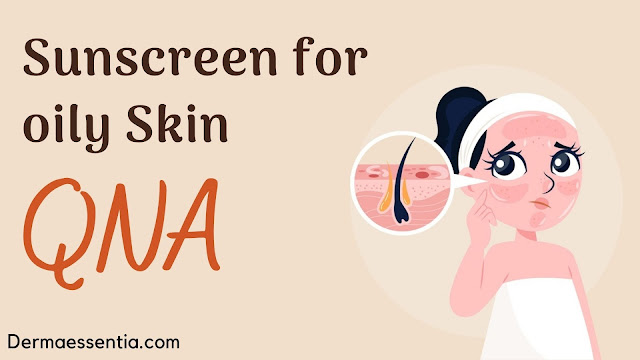The summer season affects our skin too much, especially oily skin. Hot weather makes oily skin looks very shiny, sticky and non-appealing.
Oily skin problem is very common and many people asking question about this problem. Here today in this article see the answers to most asked questions about Broad Spectrum Sunscreen for oily skin.
Why is the use of Sunscreen recommended all year round?
The sun is always there, and the radiation is always there. So what happens is that sometimes we do not feel as much heat or, as there are clouds, we do not see it.
But its radiation throughout the year, which can affect our skin. So we have to cover the exposed areas of the body with Sunscreen for 12 months. When there is greater risk in summer, you have to protect yourself the most.
Read here to know: Why to use gel sunscreen for oily skin?
What to look for to choose a suitable Sunscreen for oily skin?
Sunscreen should include at a minimum:
- UVB protection, which is determined by the SPF or number of the protector. Ideally, it should be over Sunscreen Gel with SPF 50.
- Protection against UVA, characteristic mentioned on the packaging.
- Ability to repair, It is a relatively new feature and is indicated on the packaging.
After this, the person must choose the most appropriate texture, which is important since if you have oily skin type, a too creamy protector could worsen the greasiness.
There are cream and gel varieties, both offering the protection indicated on the package. An important fact: those more mineral products, such as screens indicated for babies, may be thicker, and the person will tend to wear less.
That makes the protection less, but if the right amount is applied, it will offer all your protection. In addition, some products incorporate additional features such as anti-aging, which motivate the person to use a protector.
Is there any specific sunscreen for children?
First of all, we must say that sun protection Sunscreen for oily skin is not suitable for children less than six months. Young babies should not be actively sunbathing. Instead, it would help if you protect your skin with a hat, clothing that covers arms and legs, use of an umbrella or a car with an umbrella.
The sunscreens for children between 6 months and two years are mineral and without chemical components to avoid aggressions on their delicate skin. As a result, they are usually thicker in texture.
Sunscreens for children over two years have a physical mineral component rather than a chemical component, unlike the adult varieties. They are also thicker in texture.
What is the correct way to apply for protection?
Thirty minutes before the exhibition, but the truth is that there is not enough evidence to support it. If you put Sunscreen on a child rushing out to play, it is much better to put it on than not. The same when jogging.
The important thing regarding the application is to do it in a good and generous quantity, each area having to be left with a film. It should be placed on exposed skin areas, not forgetting the ears, behind the neck.
It is also important to reapply the protector every 4 hours. This should be done, especially when getting out of the water. When you have sweated a lot or when the body has been rubbed with a towel.
If I enter the water on a beach or pool, the effect of the protector ends.
It depends on whether the protector says "water resistant", "highly water resistant", or does not say water resistant.
That is, if it is SPF 50 when you get out of a 20-minute bath, your protection will be equivalent to SPF 25.
Is it necessary to use Sunscreen if I do not leave the house?
It will depend on the objective of the person. If you want to use a protector to prevent skin cancer, it is not necessary. The only radiation that causes skin cancer is UVB or UVA.
UVA crosses glass, but UVB does not. So if one is in the house, away from glass and without direct radiation, there should be no problem. The point is that visible light - one of the types of solar radiation and UVA and UVB - produces photoaging and spots.
How to prevent this product from irritating the eyes?
It is important to be careful when applying it near the eyes because they can indeed burn. The same with sweat: if we are wearing Sunscreen SPF 50, we must wipe the sweat before it falls into the eyes and irritates them.
In the case of those who wear contact lenses, if the protector falls into the eye, it sticks to the lens, leaving it as if it were fogged.
Should bald people protect their heads from the sun?
In any case, although the first line protection should be using a hat in bald people. And in women, it is important to change the split in summer because a burn can occur in that area.
Can you use the protector that was leftover from last year?
We must know that oil free Sunscreen for oily skin tone has an expiration date. So if we have a product purchased last year at home, you have to see that date on the container, even if it is closed.
Some brands also put the symbol of an open box that indicates the duration time once opened. In most products, this duration is 12 months.
But if I leave the protector inside the car or in the sun, that duration will be less. And if it is expired, it will not meet the expected protection objective.

Comments
Post a Comment